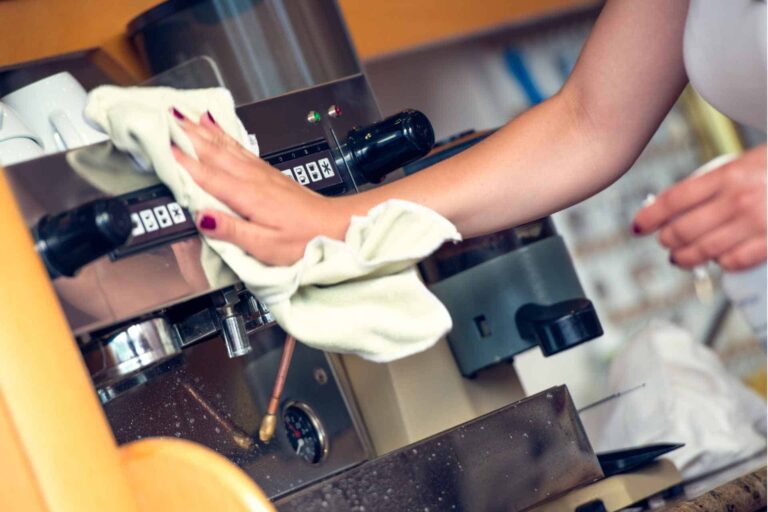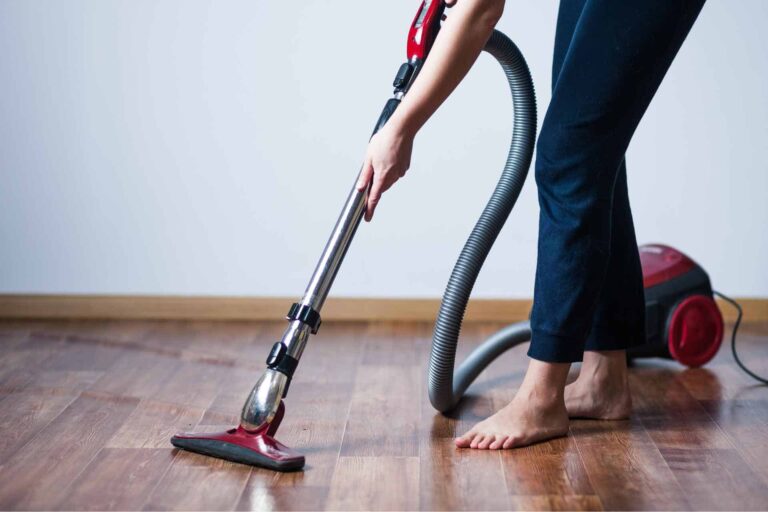How to Clean Nespresso Machine for Long-term Efficiency
How to clean Nespresso machine: A Nespresso machine, much like any other appliance, requires regular cleaning to ensure optimal performance. Regular maintenance not only preserves the machine’s longevity but also enriches the taste of your coffee. Over time, residue from the oils in coffee beans can accumulate, leading to a build-up that can adversely affect the machine’s operation and the quality of your brew. This residue can introduce unwanted flavors into your coffee, leading to a sub-par experience. Regular cleaning aids in eliminating this build-up, ensuring that each cup of coffee is fresh and tastes as intended. Furthermore, maintaining cleanliness helps prevent potential damages and breakdowns, thereby extending the lifespan of your Nespresso machine.
The impact of cleanliness on both the taste of your coffee and the lifespan of your Nespresso machine cannot be overstated. For the coffee enthusiast, the residue from old coffee grounds can significantly alter the taste of your brew. As oils and micro-grounds collect over time, they can introduce bitter, rancid flavors into your fresh cup of coffee. Regular cleaning helps to prevent this, ensuring your coffee always tastes its best. Additionally, the build-up of residue and mineral deposits can strain the machine’s components, potentially leading to breakdowns over time. It can clog the brewing chamber, causing the machine to work harder than necessary, or even cause permanent damage. Regular cleaning helps to mitigate these risks, promoting efficient operation and extending the life of your machine.
Frequency of Cleaning

The frequency of cleaning your Nespresso machine largely depends on your usage. As a general guideline, a quick clean of detached parts should be carried out after each use to prevent any residue build-up. A more comprehensive cleaning, involving descaling to remove mineral deposits, should be performed every 3 months if you use your machine daily. However, if your water is hard, you may need to descale more frequently, perhaps once a month. Regular cleaning not only improves the taste of your coffee but also prolongs the lifespan of your machine, making it a worthwhile habit for any coffee lover.
how to clean nespresso machine – Materials Needed
To effectively clean your Nespresso machine, you will need the following supplies:
- A clean, dry cloth
- Warm water
- Mild dish soap
- A soft brush or toothbrush
- A descaling solution or white vinegar
- A large bowl or basin
- A clean, empty spray bottle
Step-by-Step Cleaning Guide

Step 1: Pre-cleaning Preparation
Before you start cleaning your Nespresso machine, ensure it is turned off and unplugged to avoid any electrical accidents. Remove the water tank and empty it, then detach any other parts of the machine that can be removed, such as the drip tray and the capsule holder. These parts will be cleaned separately. Lastly, prepare your cleaning solution by mixing warm water and a few drops of mild dish soap in a large bowl or basin. Now, you are ready to start the cleaning process.
Step 2: Cleaning the Drip Tray
Begin the cleaning process by focusing on the drip tray. This part of the machine tends to accumulate coffee residue and spills, so it needs thorough attention. Immerse the drip tray in the prepared soapy water and let it soak for a few minutes. This will help loosen any dried residue. Next, use a soft brush or toothbrush to gently scrub the tray, paying special attention to any crevices or hard-to-reach areas where residue may have been collected. Once thoroughly cleaned, rinse the drip tray under running water to remove all soap traces. Be sure to do this until the water runs clear to ensure no soap residue remains. Finally, use a clean, dry cloth to wipe off any excess water and let the tray dry completely before reassembling it in the machine. Remember, a clean drip tray not only maintains the quality of your coffee but also prevents potential mechanical issues.
Step 3: Cleaning the Capsule Container
The capsule container, which holds used coffee capsules, can often become dirty with coffee grounds and residue. To clean it, first remove it from the machine. Place it in the basin of warm soapy water, allowing it to soak for a few minutes. This soaking will help break down the coffee residue. After soaking, take a soft brush or toothbrush to thoroughly scrub the container, particularly focusing on any corners or grooves where coffee grounds might be hiding. Once you’ve cleaned all corners and surfaces, rinse the container under warm running water until all the soap is gone. Make sure the water runs clear to ensure no soap residue remains. Dry the container thoroughly with a clean, dry cloth, making sure no water is left to avoid any possible mold formation. Once it’s fully dry, you can replace the capsule container back into the machine. Regular cleaning of the capsule container will not only maintain the quality of your coffee but also prolong the lifespan of your Nespresso machine.
Step 4: Cleaning the Water Tank
The water tank, often neglected in the coffee making process, is crucial to providing fresh, clean water for your coffee. To clean it, first, remove the tank from the Nespresso machine. Empty any leftover water and fill the tank with warm soapy water. Let it sit for a few minutes to help dissolve any mineral build-up or impurities. Use a soft brush or sponge to scrub the interior of the tank gently, paying particular attention to the corners and hard-to-reach areas. After scrubbing, rinse the tank thoroughly under warm running water, ensuring all soap is washed away. Continue rinsing until the water runs clear, indicating that no soap residue remains. Dry the water tank completely using a clean, dry cloth, paying particular attention to any crevices where water might collect. Once the tank is dry, refill it with fresh water and reattach it to the machine. Regular cleaning of the water tank will not only improve the taste of your coffee but also prevent potential issues with your Nespresso machine.
Step 5: Descaling the Machine
Descaling is a crucial maintenance task that removes mineral buildup from your machine’s inner workings. You should descale your Nespresso machine every three months, or whenever you notice a decrease in water flow.
To descale your machine, first, remove any capsules and empty the drip tray. Insert a container under the coffee outlet that can hold up to a liter of liquid. Fill the water tank with 500ml of water and mix in a packet of descaling solution.
Turn on the machine and let it heat up. Once heated, hold the button for 3 seconds to start the descaling process. The water and descaling solution will flow through the machine, breaking up the mineral buildup. Once the water tank is empty, refill it with the solution, and repeat the process.
After the second cycle, rinse the water tank thoroughly and fill it with fresh water. Run a final cycle with just water to rinse away any remaining descaling solution. Once this cycle is complete, your Nespresso machine has been descaled and is ready for use. Regular descaling will keep your machine running smoothly and your coffee tasting great.
Common Issues and How to Fix Them

Even with regular maintenance, you may occasionally encounter issues with your Nespresso machine. Here are some common problems and their solutions:
- The machine is not turning on.
Check if the machine is properly plugged into the power outlet and that the outlet is functional. If the problem persists, contact the manufacturer or a professional repair service.
- The machine is not pumping water.
This could be due to an air bubble in the system. Try turning off the machine, unplugging it, and then shaking it a few times. Plug it back in, turn it on, and see if the water begins to flow. If not, descaling the machine as described in Step 5 might help.
- Coffee is not hot enough.
Preheat your cup by rinsing it with hot water before brewing your coffee. If your coffee is still not hot enough, there may be an issue with the machine’s heating system and you may need to seek professional help.
- Coffee tastes bad or off.
This could be due to a dirty water tank or a need to descale the machine. Refer to the cleaning and descaling steps above to address this issue.
Remember, if your machine continues to have problems after trying these solutions, it’s best to consult the Nespresso user manual or contact customer service for further assistance.
Conclusion
Regular cleaning and maintenance of your Nespresso machine are paramount for its optimal performance and longevity. Not only does this practice ensure that the machine operates at its best, but it also contributes significantly to the quality of the coffee it produces. Regular descaling prevents the buildup of minerals that can impede the machine’s function and alter the taste of your coffee. By addressing common issues promptly and performing routine maintenance, you can enjoy delicious, high-quality coffee every day and extend the lifespan of your machine substantially.
References
- Nespresso. (2021). User Manuals. Retrieved from https://www.nespresso.com.
- Coffee Dino. (2020). Nespresso Troubleshooting. Retrieved from https://www.coffeedino.com.
- Perfect Daily Grind. (2019). How to Clean Your Coffee Machine. Retrieved from https://www.perfectdailygrind.com.
- The Coffee Maven. (2020). Nespresso Machine Maintenance: How to Clean & Descale. Retrieved from https://www.thecoffeemaven.com.








